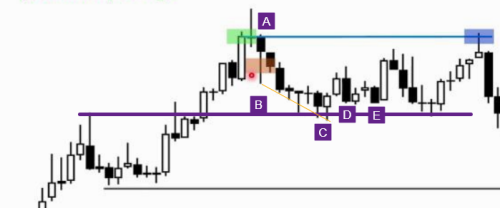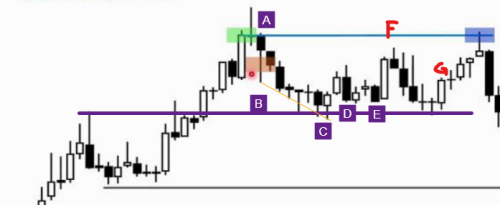The support forum is built with (1) General and FAQ forums for common trading queries received from aspiring and experienced traders, and (2) forums for course video topics. How to Trade Price Action and How to Trade Forex Price Action videos are consolidated into common forums.
Brooks Trading Course social media communities
Around minute 7 he talks about "wait a minute, how can a trader risk so much to make so little", but then says that often a trader can get out early before letting it hit his stop. At this point the trader has bought 1 contract near the top of the leg, buys a 2nd contract 1 pt lower, and holds all the way until the first contract is breakeven and second contract is a 1 pt profit, and exits there. So my question is, if the 5 bear bar pullback and later a double top lower high possible MTR with good signal, which led to 3 bear bar pullback, to around 50% of the way to the stop, is not enough to cause a trader to exit early before letting it hit the stop, then what is?
If this chart isn't enough to cause a trader to exit early, then I can only assume it would have to be an even stronger pullback, which means exiting after like 3 strong bars which is probably then 75%+ of the way to the stop, which means that the trader is indeed risking a lot to make so little, and doesn't have much room to exit before his stop is hit.
Just feels inconsistent, anyone help clarify?
There are three videos 35 (A-C). Could you clarify which one and the exact minute:seconds where to start? Thanks.
Which video no. and which slide no. ?
My apologies. This is for video 35C, slide 6, around 10:20, where he talks about the big risk versus reward where a trader is likely to not let his stop get hit. But it wasn't very clear when someone is likely to, or should exit the trade early before stop getting hit. I just know if I were trading this live, I probably would have been faked out into thinking there was a possible LH MTR here, and not held until my original entry hit breakeven.
One thing to look for is "who's trapped?" Because if bulls who BTC'd the close of that bull bar that Al marked with green box were disappointed by FT bar, it looks like they could've actually gotten out BE because the next bear bar ticked up enough to let them out. So the majority of bulls were probably out and and not trapped so are free to buy lower reducing the overall bear case. And those few who are still trapped, Al gives all those reasons for them to expect a retest of prior extreme.
After the PB began I would look at where the prior swing highs, gaps and various BOPs are. Bull breakouts often test back down to those areas so can reasonably expect it to happen here as well (like the B area) so I wouldn't panic yet and see what the market does in that area.
In fact the last 5 bars leading up to C were all dojis with tails, so probably a micro spike+CH formation. Then at C it formed a wedge.
D was a scary bear bar, I agree, and looks like the next bar even ticked below. I won't lie I probably would've exited below it. The only thing that would've kept me in the trade (maybe) is looking back at that B level and seeing how it held and I'd hate to be selling into support.
E was scary too but notice that it formed a DB with D and never triggered.
After that the whole thing looks like it's forming an upper TR and even after the next 3 cc bear bars I wouldn't exit anymore because it would be selling into TR lows.
Skunk Stops
The definition of a skunk stop is exiting somewhere in the middle (of the road) between an early exit and a wide exit. If you don't plan to scale in and will exit immediately if trade doesn't go then probably taking a loss on the inside bear bar after A was the way to go. Otherwise the other stoploss is where Al showed it all the way below the spike.
Fear Due To Size
Most trading problems are due to size too big. That wide stop Al showed requires to reduce size a lot. If you also plan to scale in once or twice you would reduce your size even more down to 1/2 or 1/3rd of that. So by the time you actually enter a trade at green box you're tiny. So fear shouldn't be a problem anymore.
Hope this helps!
Thanks Mr. Carpet for the detailed reply. I really liked the comment about the test of the prior breakout, where I see that we basically maintained that as a breakout gap or negative gap. The spot I was considering selling was the bear bar that is two bars after your 'E' (on my pic, 'F'), which in my mind is a failed breakout of the tight trading range before it, a test of the initial breakdown point below the doji at the top before 'A', and high enough up in the range with enough bars in this sequence that it felt like a credible LH MTR. I assume even more stuck bulls would have exited on the test of the low of that doji before 'A' and wouldn't look to buy again for 5-10 bars. I do see that selling after those 3 bear bars (after 'F') would be selling at the bottom of a potential trading range, and those bear bars had a lot of overlap and conspicuous tails. I also see that if I did sell here, I could possibly re-enter on the bull bar 5 bars later (on my pic, 'G'), though this wasn't the point of the discussion in the actual video.
So my new questions are:
Do you think 'F' is not a reasonable sell for the bulls?
After the strong bull bar after 'E', can we move our stop below 'C' expecting the gap to be maintained if this is to remain bullish? I guess that is one way that we would not have let our original stop be hit -- if we moved our stop up.
Thanks again.


